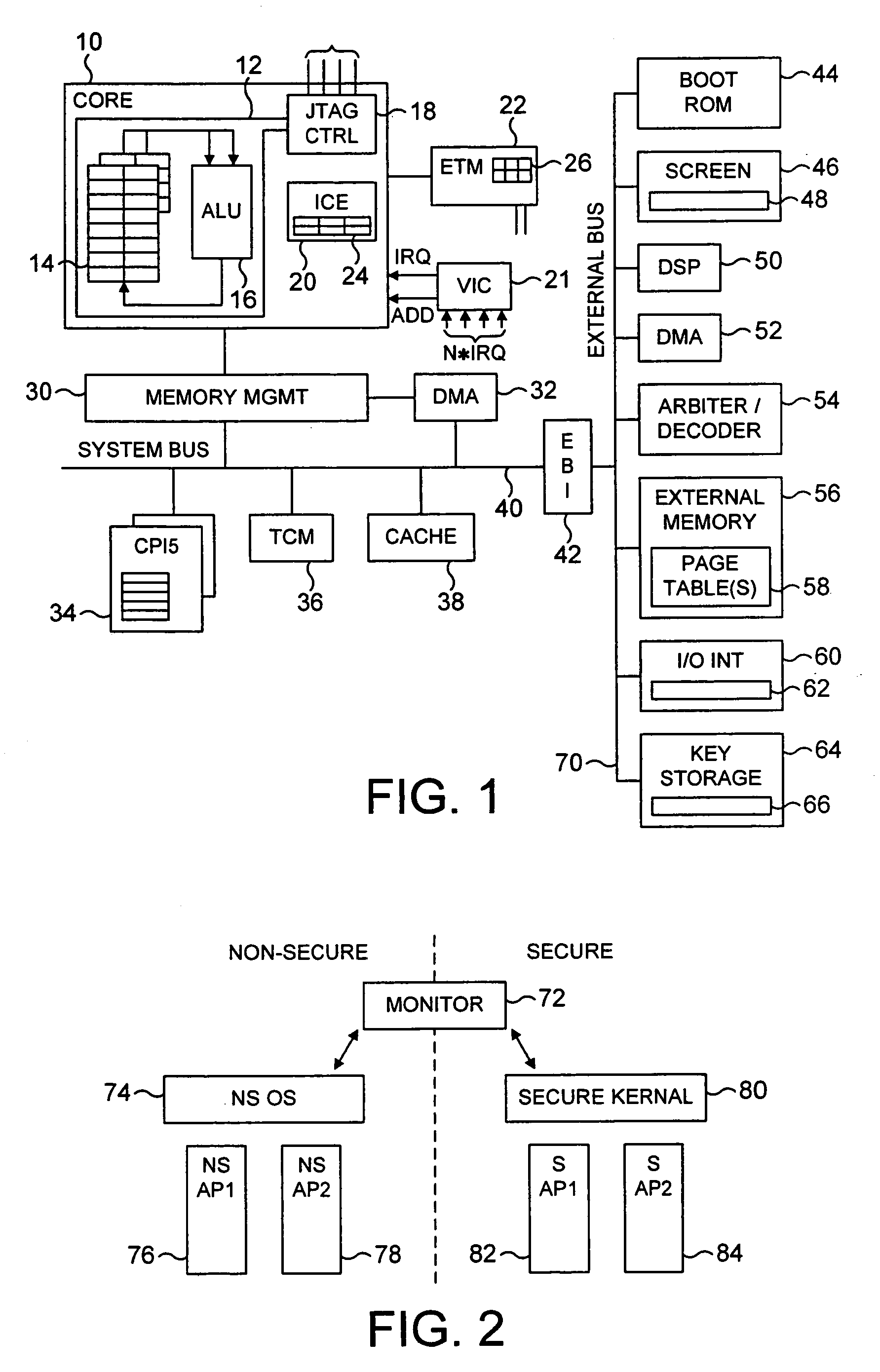Apparatus and method for managing access to a memory
a technology of access management and memory, applied in the direction of unauthorized memory use protection, memory adressing/allocation/relocation, instruments, etc., can solve the problems of large and complex operating system, difficult to ensure sufficient security within the operating system itself,
- Summary
- Abstract
- Description
- Claims
- Application Information
AI Technical Summary
Benefits of technology
Problems solved by technology
Method used
Image
Examples
Embodiment Construction
[0098]FIG. 1 is a block diagram illustrating a data processing apparatus in accordance with preferred embodiments of the present invention. The data processing apparatus incorporates a processor core 10 within which is provided an arithmetic logic unit (ALU) 16 arranged to execute sequences of instructions. Data required by the ALU 16 is stored within a register bank 14. The core 10 is provided with various monitoring functions to enable diagnostic data to be captured indicative of the activities of the processor core. As an example, an Embedded Trace Module (ETM) 22 is provided for producing a real time trace of certain activities of the processor core in dependence on the contents of certain control registers 26 within the ETM 22 defining which activities are to be traced. The trace signals are typically output to a trace buffer from where they can subsequently be analysed. A vectored interrupt controller 21 is provided for managing the servicing of a plurality of interrupts which...
PUM
 Login to View More
Login to View More Abstract
Description
Claims
Application Information
 Login to View More
Login to View More - R&D
- Intellectual Property
- Life Sciences
- Materials
- Tech Scout
- Unparalleled Data Quality
- Higher Quality Content
- 60% Fewer Hallucinations
Browse by: Latest US Patents, China's latest patents, Technical Efficacy Thesaurus, Application Domain, Technology Topic, Popular Technical Reports.
© 2025 PatSnap. All rights reserved.Legal|Privacy policy|Modern Slavery Act Transparency Statement|Sitemap|About US| Contact US: help@patsnap.com



